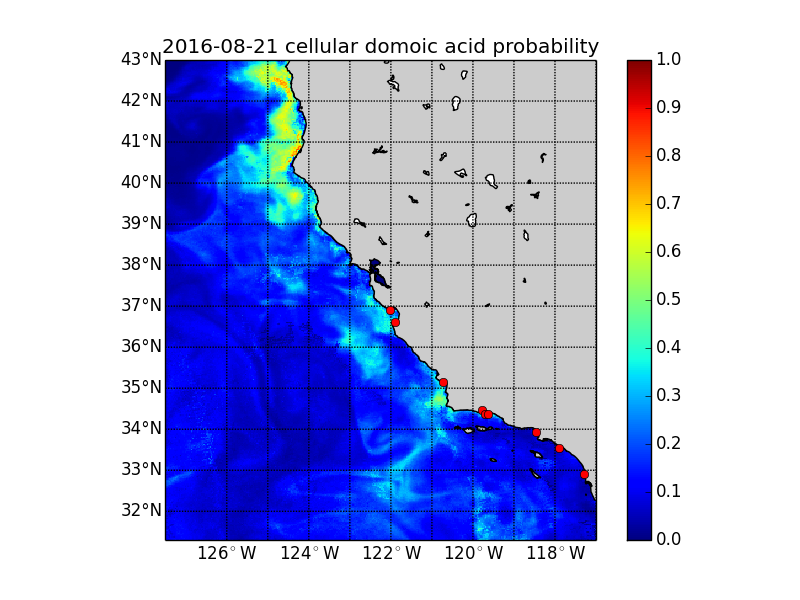
Sorry for the silence. It’s been quite a while since my last entry in the spring when the State was still in the throngs of the Dungeness crab closure, and I was preparing for the throngs of child labor. We all emerged alive, albeit battered and bruised. As the El Niño winter washed over us, the ocean ecosystem responded in a predictable manner, with reduced spring blooms of phytoplankton. Phytoplankton growth was likely suppressed by reduced nutrient supply in the lighted portion of the water column. Upwelling winds from the north were not necessarily weakened, but when they did blow, the water that was upwelled was not sufficient to support the kind of blooms we saw of Pseudo-nitzschia last year nor was the ecosystem preconditioned with high nutrients the way it had been entering the spring transition of 2015. We are well into the summer and are finally seeing the effects of high domoic acid levels on the food web. Bivalves (mussels, oysters, scallops) and rock crabs in Monterey Bay are very high in DA, in some places 10 times the regulatory limit. This advisory extends to Half Moon Bay, at least for rock crabs. For now, the effects are being felt locally and do not include the entire State as we saw last year with the warm blob-induced event that closed fisheries from Santa Barbara, CA to Washington. The late start to the season is most likely the result of the El Niño and a delayed spring transition. The warm waters that continue to linger in the wake of the warm blob and El Niño are probably encouraging persistence of Pseudo-nitzschia in hot spots like Monterey Bay. The California Harmful Algae Risk Mapping (C-HARM) system predicts enhanced levels of cellular DA in Monterey Bay and Half Moon Bay, as well as near San Luis Obispo and along the Humboldt coast. With the coastwide effects of the blob finally dissipating, it does not appear that Pseudo-nitzschia will be as prolific as it was in 2015. The current status of sea surface temperatures in the equatorial Pacific is “ENSO-neutral,” but there is a 60% chance of La Niña developing this fall, which means enhanced coastal upwelling and cooler water temperatures. This does not preclude the possibility of a big Pseudo-nitzschia bloom. We saw peaks in blooms and DA in the La Niña summer-fall of 2010. The higher nutrients can mean high growth rates, but if winds are strong enough, we may not see the blooms retained nearshore.